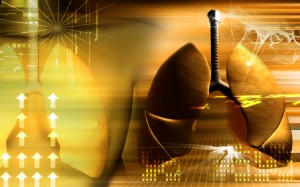 In our two part mini-report on e-cigs, Florida Lung, Asthma and Sleep Specialists will help you consider if “to vape or not to vape” evokes the same question as “to be or not to be.”
In our two part mini-report on e-cigs, Florida Lung, Asthma and Sleep Specialists will help you consider if “to vape or not to vape” evokes the same question as “to be or not to be.”
The Doctors of Florida Lung, Asthma and Sleep Specialists, (FLASS) have noticed the popularity of some new, not-so-healthy smoking devices known as e-cigs or electronic cigarettes.
Undoubtedly you have seen the commercials that praise the new habit: vaping.
We are referring to using vapor cigarettes or e-cigs. Using them looks just like cigarette smoking.
They purport to taste like cigarettes.
Some of them even have nicotine, like cigarettes.
The big question to us is, “Do they damage your lungs, just like cigarettes?”
Searching In the Vapor
Let’s clear away the smoke and mirrors of advertising hype, and take a good look at Electronic cigarette use. Do you know that it has now surpassed traditional cigarette use among middle and high school students?
The percentage of U.S. middle and high school students who use electronic cigarettes, or e-cigarettes, more than doubled recently, according to recent data published by the Centers for Disease Control and Prevention.
1. Big Concern Number One: Entry-level Tobacco Use
Statistics reported that 76.3 percent of middle and high school students who used e-cigarettes within a month also smoked regular cigarettes during the same thirty days.
The CDC reports, “In addition, 1 in 5 middle school students who reported ever using e-cigarettes say they have never tried conventional cigarettes.”
They clearly explained, “This raises a concern that there may be young people for whom e-cigarettes could be an entry point to use of conventional tobacco products, including cigarettes.”
2. Big Concern Number Two: The Cessation Concept
We know that some smokers have switched to e-cigs and we know the new devices forego some of the poisonous carcinogens inherent in traditional cigarettes . However, there are not enough studies to provide conclusive, empirical evidence that the e-cig is a reliable, quitting device.
This year the CDC stated, “There is no conclusive scientific evidence that e-cigarettes promote successful long-term quitting. However, there are proven cessation strategies and treatments, including counseling and FDA-approved cessation medications.” If you are a cigarette smoker, check out the advice at this helpful resource.
3. Big Concern Number Three: Effects of Nicotine on Lung Tissue
Recently, research scientists studied the effects of cigarette smoke and e-cigarette solution on humans and mice as well as microscopic cellular studies. They conducted studies on both nicotine and nicotine-free styles of cigarettes and e-cig solutions. One of their undeniable conclusions was that, “Nicotine has dose-dependent deleterious pulmonary effects that result in loss of lung endothelial barrier function, acute lung inflammation and decreased lung endothelial cell proliferation.”
The doctors and staff here at FLASS want you to know they saw the effects of nicotine both in cigarette smoke and in e-cig solutions that contained nicotine. To put it simply, nicotine hurts lung tissue at the cellular level, no matter how it is consumed.
4. Big Concern Number Four: Acroein
Given the public misinformation about e-cigs, we are sure many users would be surprised to know that researchers found many nicotine-free e-cig solutions included harmful substances, such as acrolein.
To put it simply, acrolein simply causes lung damage by “attacking the molecules that hold endothelial cells together.” For more detailed information about the research on acrolein and about e-cigs, FLASS urges you to return to this website and read our next blog, Part II of To Vape or Not To Vape, on this quietly destructive new threat to lung health.

